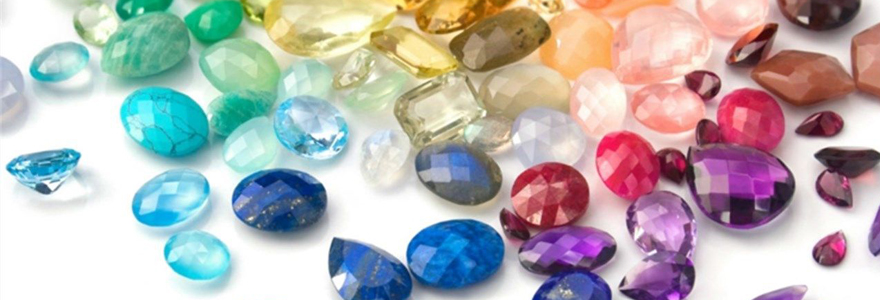
The beauty industry is continuously growing each passing day. Jewellery is now becoming more valuable than mere beauty ornaments. The website www.minerals-kingdom.com has listed a variety of these stones, how they are moulded into beautiful ornaments and their medicinal value. These stones are medically tested and confirmed of their value to human treatment. Lithotherapy is a practice derives from ancient medical procedures. Litho and therapy mean “stone” and “cure” respectively in Greek.
The Origin of Lithotherapy
Using natural stone for medicinal value was common in medieval times. The healing was mostly attributed to spiritual and mental health. The stone properties were believed to bring calmness and stabilised emotions to maintain both sanity and physiological conditions. Different civilizations had their own belief on different natural stones. Recorded history on this form of treatment is in Egypt, Greece, Aztecs, China, Japan India and part of Israel. The earliest documented recovered was The Perfect Jeweller or History of Stones, written by Anselme de Boot. It detailed the healing stone properties.
Subsequent writings were done by Lemery on his book “The Drugs Encyclopaedia” and Prof Guibourt in the “History of Simple Drugs”. The stone virtues were tested in these instances and found to have a significant effect on physiology and mental conditions on human beings.
People who underwent therapy sessions using the stones showed positive energy, increased attentiveness and reduction to stress levels. They were used as ornaments; placed around the house or incorporated to the normal lives. Others were used as yoga equipment (still used to date) as others were mixed with other herbs to produce medicine for a variety of ailments.
Common Stones Used in Jewellery and their Use
- Amber – it comes in red, yellow or brown colour and is believed to be a remedy for stress and headaches. Research also shows that it helps boost self-confidence, bodily purification and alleviating pain.
- Pearl – perhaps one of the most notable gemstones, it comes in numerous shapes, sizes and shades. It is known for body stabilisation, creates a happy feeling and makes one remain positive. Its glowing feature can also be used to rejuvenate the skin colour.
- Garnet – the deep red colour denotes energy; a feat that could help patients overcome their health condition. It also boosts self-confidence, revitalises the body, protects against evil and stabilises mental capacities.
- Amethyst – its colouring is associated with courage, strength and peace of mind. The quiet energy retains calmness and promotes healing. Jewellery with amethyst stones are good for people with self-esteem issues, anxiety, addictions and mood swings.
- Rose Quartz – it is a common gemstone and is used to treat heartaches. The soothing feeling of the stone has associated it with love and a perfect remedy for people going through a rough patch emotionally. It also instils a sense of personal love and positivity towards life.
- Aquamarine – from the name, the gemstone is light blue. Its beauty is unmatched and is the same feature that makes it perfect as a remedy for an uneasy feeling. Other uses include providing solutions for the digestive system, eyesight and teeth.
- Citrine – it has a warm colour that makes one open up to the best side of life. It instils positive energy and invokes a sense of well-being. Other uses are healing sleeping discomforts, hearing problems, pain management and digestive inconsistencies.
- Moonstones – it was originally used as a guiding stone for travellers who believed it protected them from the harsh conditions of trekking. Currently, jewellery made from moonstones relieves the wearer of any depression, anxiety and sleeping discomforts. Women value its use more, thanks to its feminine colour and feel.
The Symbolism of Each Colour
The list of gemstone and their medicinal effect is large. To summarise using their observable properties, researchers have distinctly grouped them based on their appearance.
- Black stones – it is colour associated with darkness. Stones bearing this colour are used to show stability, protection, elegance and exclusivity. Black stones include ilvaite, nuummite, black spinel and astrophyte.
- Blue stones – it is the colour of the sky and mostly associated with sincerity, calmness, peace and inspiration. Some of the blue stones include the blue tourmaline, sodalight labradorite and blue sapphire.
- Brown stones – brown is a colour of confidence and stability. Jewellery with brown components denote personal security, growth, and in other spheres, a sign of fertility. Some of the stone who exhibit these traits are bronzite, smoky quartz, stromatolithe and aragonite.
- Golden stones – it is a natural colour of opulence, richness, prosperity and optimism. It shows high standards; no wonder it is among the most valued precious metals. Pyrite and gold are the stones in this category.
- Green stones – green is a colour of natural richness; nature, life and fertility. It inspires life, give hope and offers personal and mental balance to the wearer. Stones with green in them include the seraphinite, moss agate, green calcite, moldoviate and tsavorite.
E-commerce and Jewellery Sales
The ever involving marketplace has made the internet a prime place for transactions. Most natural stone jewellery have found their buyers online and has increased penetration around the world. The internet has also increased the knowledge of Lithotherapy and the role the natural stones play in the practice. They may be just ornaments to most people, but stone virtues supersede their physical state.